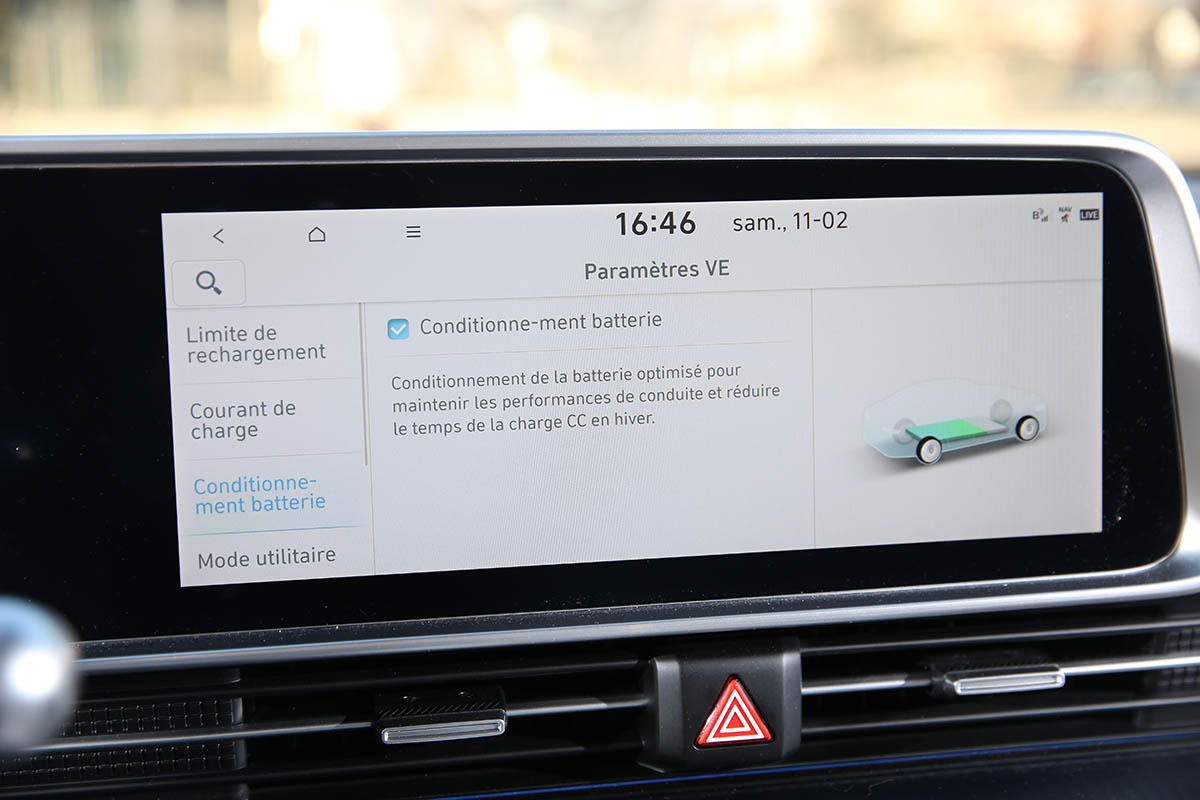
The preconditioning system allows a battery to withstand the best rapid cold charging powers. Let's look at the principles of technology.
For a battery to be able to deliver its full potential during the discharge and recharge phase, its cells must be within an ideal operating temperature range. If they are too cold or, conversely, too hot, they cannot keep all their promises in terms of power, but they can also deteriorate. To give the best to the user while preserving the good health of the battery, the management system takes care, via the cooling circuit, of maintaining the batteries at the right temperature.
However, and this is of course the case if it is cold, it can be difficult to rely solely on the activity of the battery (Joule effect) for it to rise in temperature. Especially since the latter is increasingly crucial: with the development of technologies and increasingly greater powers, cells are very sensitive to temperature. This is where the battery preconditioning system comes into play. Obviously unknown on board a thermal car, this device consists of forcing the heating of the battery. In addition to preserving the health of the battery, the system promises to save time at fast charging stations. But this is paid for by overconsumption. We take stock of what is really happening under the floor.
Technical reminder
A battery is made up of several cells in which electrons move from one pole to the other through a liquid electrolyte. When it is cold, matter becomes denser, which slows down the movement of electrons, which then need more energy to reach the opposite pole. During the charging phase, this internal resistance irreversibly degrades the batteries with the plating phenomenon. Without going into scientific details, this materializes in the appearance of lithium deposits, also called dendrites. While they are obviously not welcome in cells, their effects on performance and capacity are limited if they are small. On the other hand, if they proliferate, they can degrade the separation between the two poles and thus create a short circuit, which could lead to a fire.
Read also
Is the electric Citroën C4 the fastest to cover 1000 km? Not so fast!
It is during rapid recharges, with high direct current powers, that the reaction is the most important. To reduce the phenomenon, among other technical reasons, the on-board electronics therefore limit the recharging power by waiting for the battery to rise in temperature thanks to its activity during recharging and, sometimes, by using the energy of the network to activate its system thermal regulation. This is why a quick recharge when cold will always be slower than a similar exercise when hot.
How does preconditioning work?
Despite the precautions of the management system (Battery Management System, or BMS), the phenomenon is not completely eradicated, although greatly reduced. On the front side, the operation makes it possible to force the heating of the battery and therefore save the driver time. On the battery side, no pun intended, this helps preserve the good health of the battery, always kept within its ideal temperature ranges. To do this, the battery cooling system is then reversed, as it were: the heated heat transfer liquid will have the task of raising the temperature of the cells. Conversely, even if the case is rarer, the management will seek to cool a battery that is too hot before rapid recharging in summer for example.
As for heating the passenger compartment, two solutions exist for heating the circuit: either with an electric resistance (more efficient, but more energy-intensive), or with the heat pump circuit. In other words, preconditioning consumes a little more energy while driving (thus increasing the average displayed on the dashboard) to save time at the terminals. The time and energy required for the operation depends on a multitude of parameters, including the initial temperature of the battery, the charging rate and the distance which separates the vehicle from a fast charging station. In the latter case, the strategy consists of increasing the temperature of the battery to the gates of the targeted terminal, in order to avoid losing heat unnecessarily (and therefore having consumed for nothing).


How is battery preconditioning activated?
For it to be truly effective, the battery system is regularly coupled to the car's on-board navigation. When this is activated and with a fast charging station on the way, the device then takes into account the remaining travel time and the charging rate on arrival to warm the battery to the ideal temperature. This is the simplest and fastest way.
But this is not always the case and some manufacturers give users the choice to activate it manually. Some mention the fact that the system cannot work if the driver uses third-party navigation (Google Maps, Waze, etc.), while others prefer to leave the choice between saving energy or saving time. In all cases, they recommend activating it between 30 and 40 minutes before arriving at the terminal. This is the time generally required to bring a cold battery up to temperature, at least within its low operating temperature range (between 10 and 15°C at the lowest during winter driving). On the other hand, false manipulations are not excluded, which can lead to unnecessary overconsumption in the event of inadvertent activation.
Read also
Peugeot e-308: is its heat pump really efficient?
Is preconditioning useful?
Consuming a little more energy to go faster and preserve the battery: here is a brief summary of this technology that is increasingly used in view of increasingly high power levels. However, there is no single truth regarding the usefulness of battery preconditioning, since it depends on many parameters and the use you make of your car. If you drive at low speeds in winter, the battery may need a boost to reach its target temperature. Likewise if you have not anticipated a departure and you have to go through the cold rapid recharge box. In other cases, after driving at 130 km/h for a long time, it is quite likely that the battery is at or near temperature, limiting the loss of time (and degradation). In any case, the battery being strongly heated by a first rapid recharge could make the action of the preconditioning system quite superfluous for subsequent recharges. In short, the subject is complex, but we will talk about it again in a future article with our exclusive measurements.
